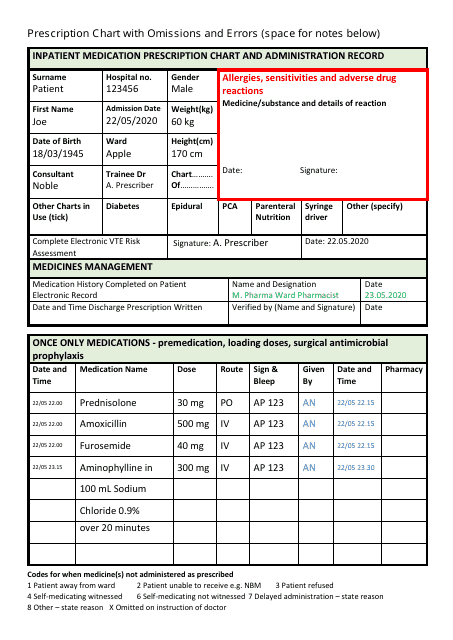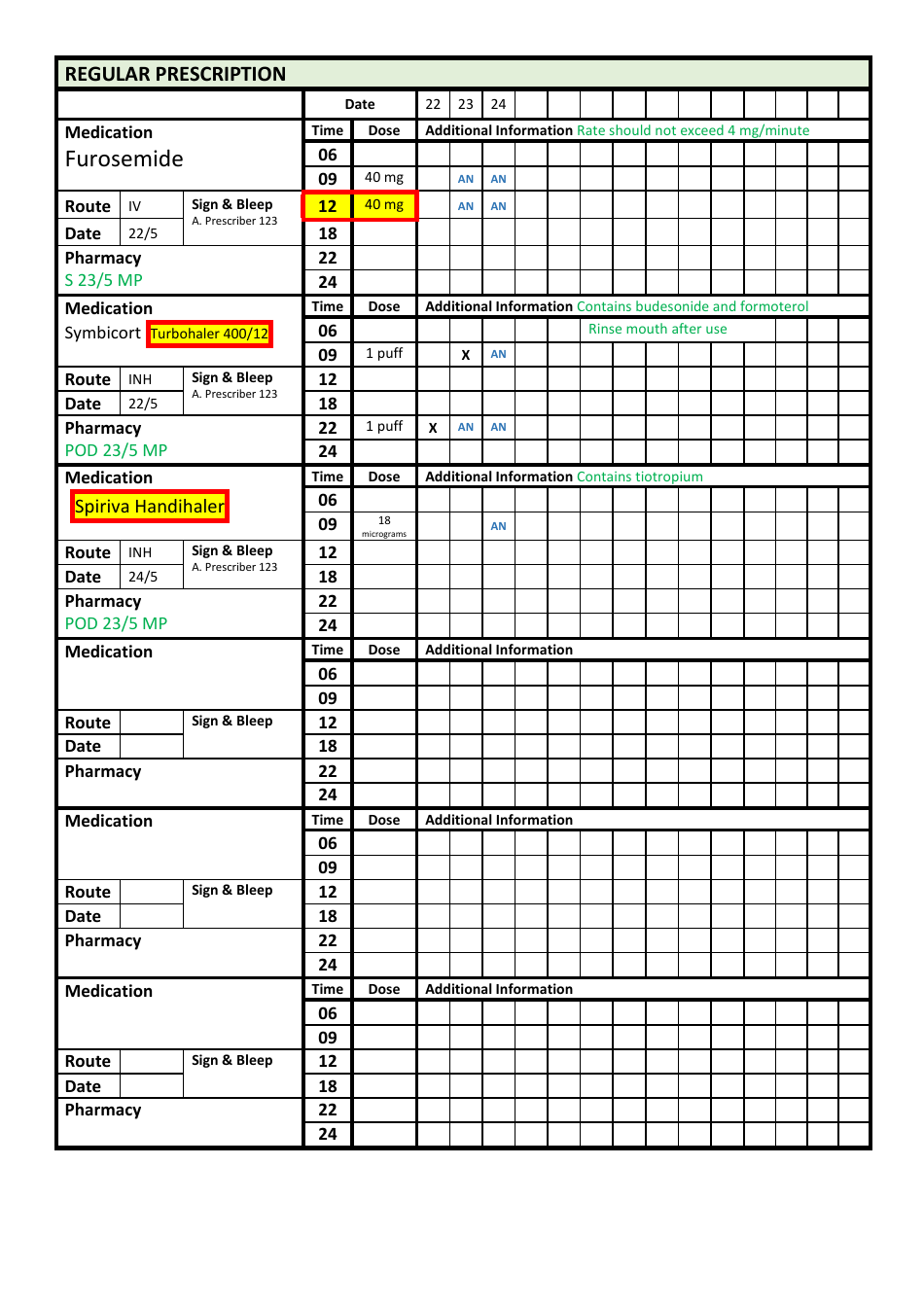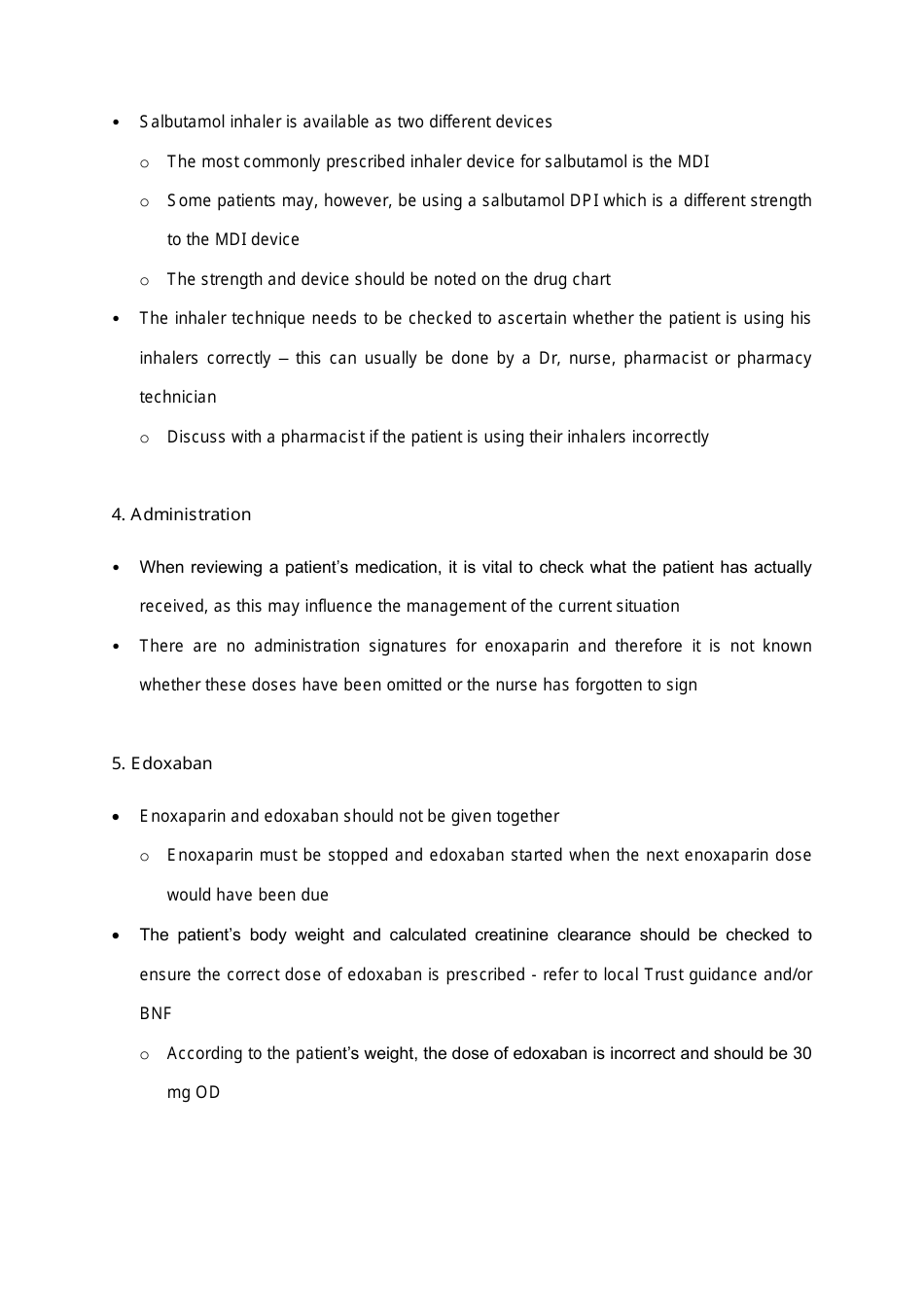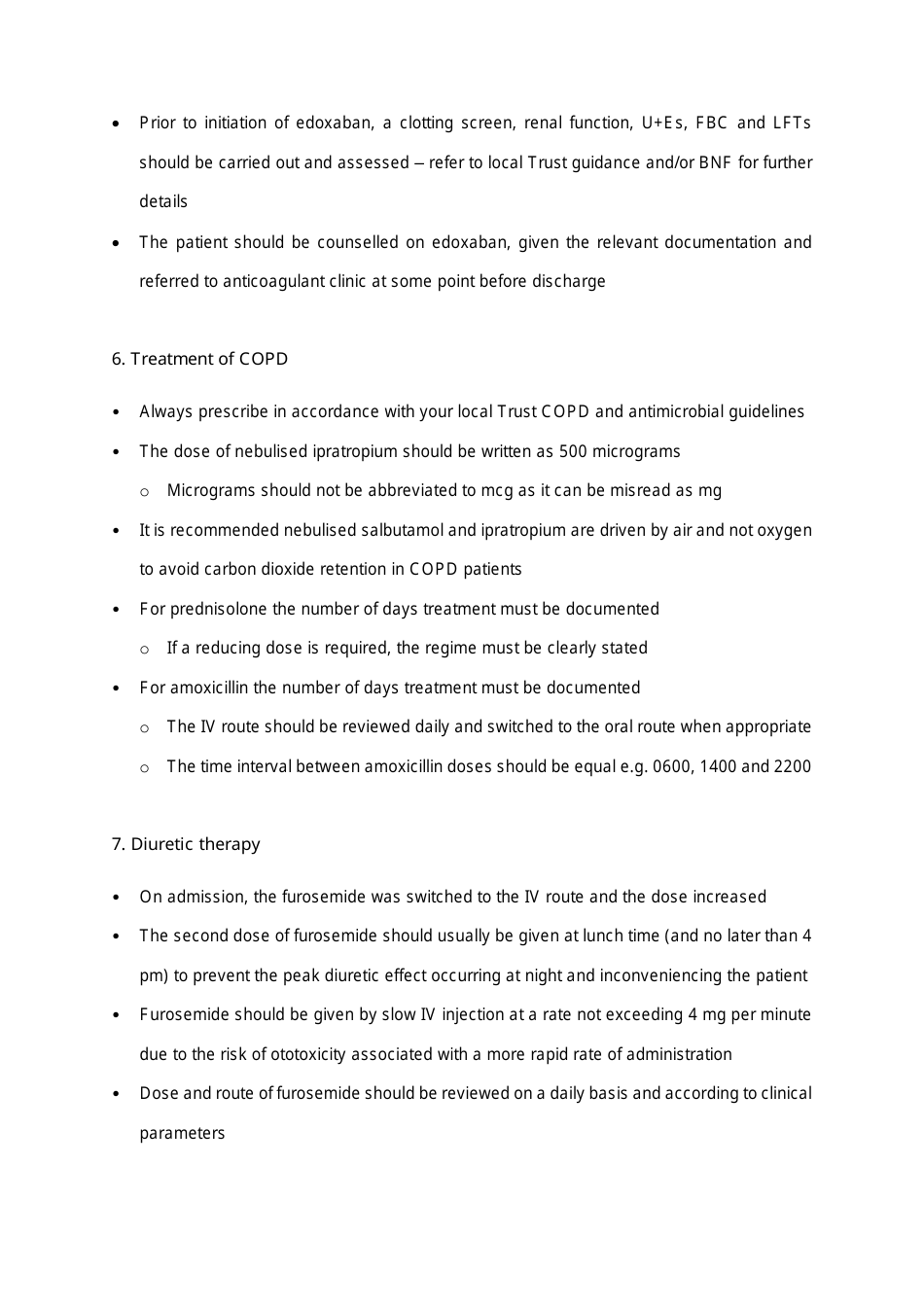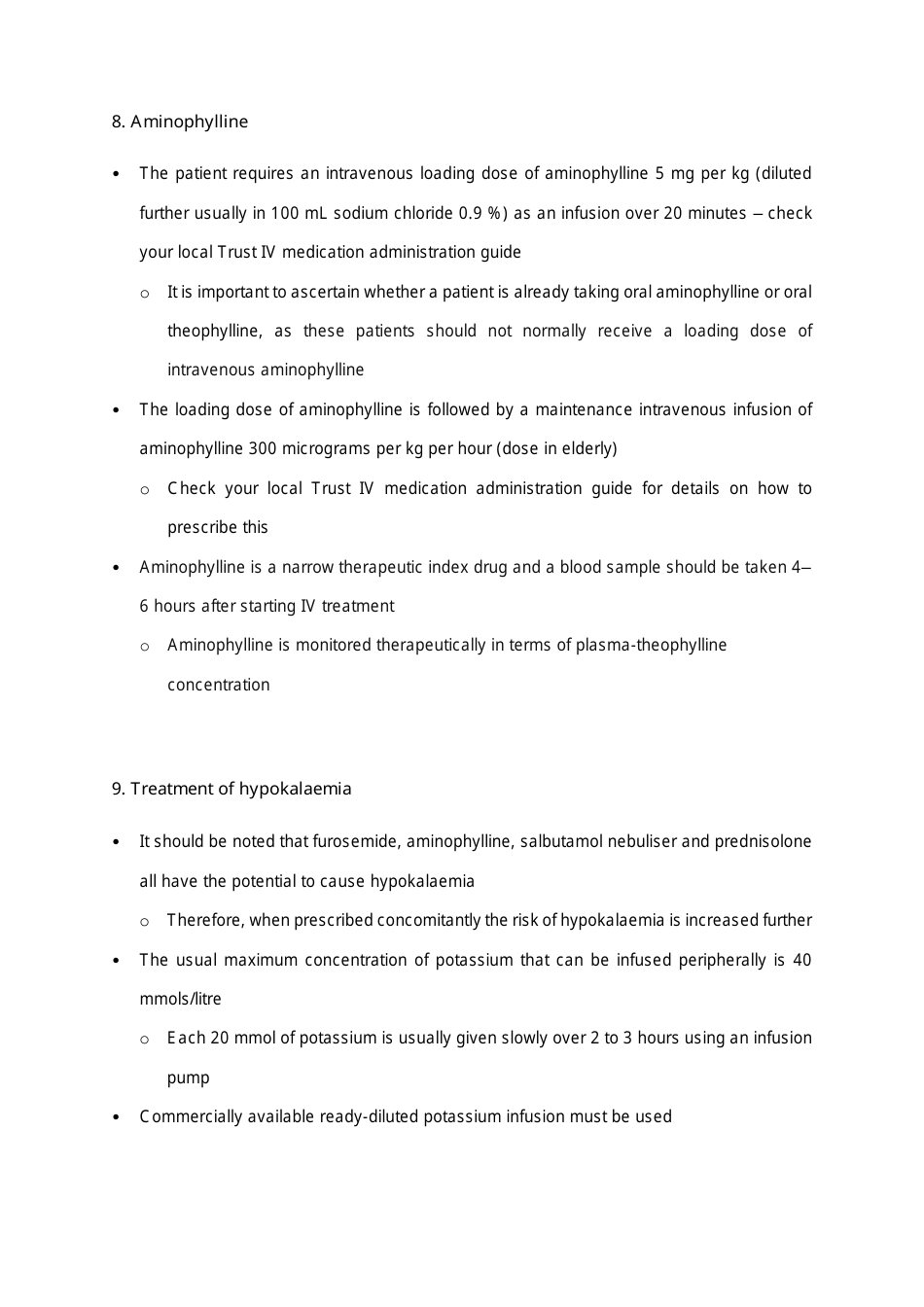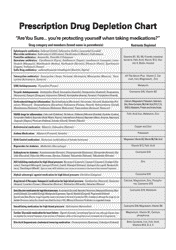Sample Prescription Chart With Omissions and Errors
A Sample Prescription Chart With Omissions and Errors is a learning tool used primarily in medical education. It's meant to teach healthcare professionals, particularly students in medicine and pharmacy, on how to write clear, accurate, and safe prescriptions for patients.
The chart features fictional prescription information that includes intentional errors and omissions, such as wrong dosage, missing patient information, illegible handwriting, etc. Students review the chart and identify these mistakes as part of their training in avoiding medical errors in real-world clinical practice. It's a practical way to highlight common pitfalls and best practices in prescription writing.
Remember, though, this document should never be used in actual patient care; rather, it is solely an educational resource for medical professionals in training.
A sample prescription chart with omissions and errors is usually filed by a healthcare provider such as a doctor or a nurse. This document is commonly utilized as a part of medical training or education purposes to practice identifying and correcting potential medication errors.
FAQ
Q: What is a prescription chart?
A: A prescription chart is a document that doctors use to write orders for medications. They include all the information needed to give a patient their appropriate medicine, such as the name of the drug, the dosage, the timing, and any special instructions.
Q: What can cause omissions and errors in a prescription chart?
A: Mistakes in prescription charts can occur due to a variety of reasons. These could include illegible handwriting, incorrect drug name, dosage or route, use of inappropriate abbreviations, failure to specify times for administration, and lack of relevant patient information, among others.
Q: What are the potential consequences of errors in a prescription chart?
A: The impact of prescription errors can range from no harm to severe harm, including death. The consequences depend on the type of error, the drug involved, and the clinical condition of the patient. Such errors can also lead to delays in treatment, increased healthcare costs, and loss of trust in healthcare professionals.
Q: How can errors and omissions in prescription charts be prevented?
A: Prevention strategies can include training and education of healthcare professionals, using electronic prescriptions instead of handwritten ones, well designed prescription charts, routine checks, and audits for errors, patient involvement, and promoting a culture of safety within the healthcare setting.
Q: What role does a pharmacist play in preventing prescription chart errors?
A: Pharmacists have a vital role in picking up and correcting errors in prescription charts. They can check for medication errors, ensure dosage and medication appropriateness, identify drug interactions and allergies, and advise physicians on the optimum use of medications.
Q: What measures can patients take to avoid prescription chart errors?
A: Patients can reduce the risk of errors by being active participants in their healthcare. This can include asking their doctors questions about their medications, understanding why they're taking them, knowing their dosages, and being aware of potential side effects. Checking prescriptions for accuracy, keeping an up-to-date list of all medicines, and sharing this information with all healthcare providers can also help.
